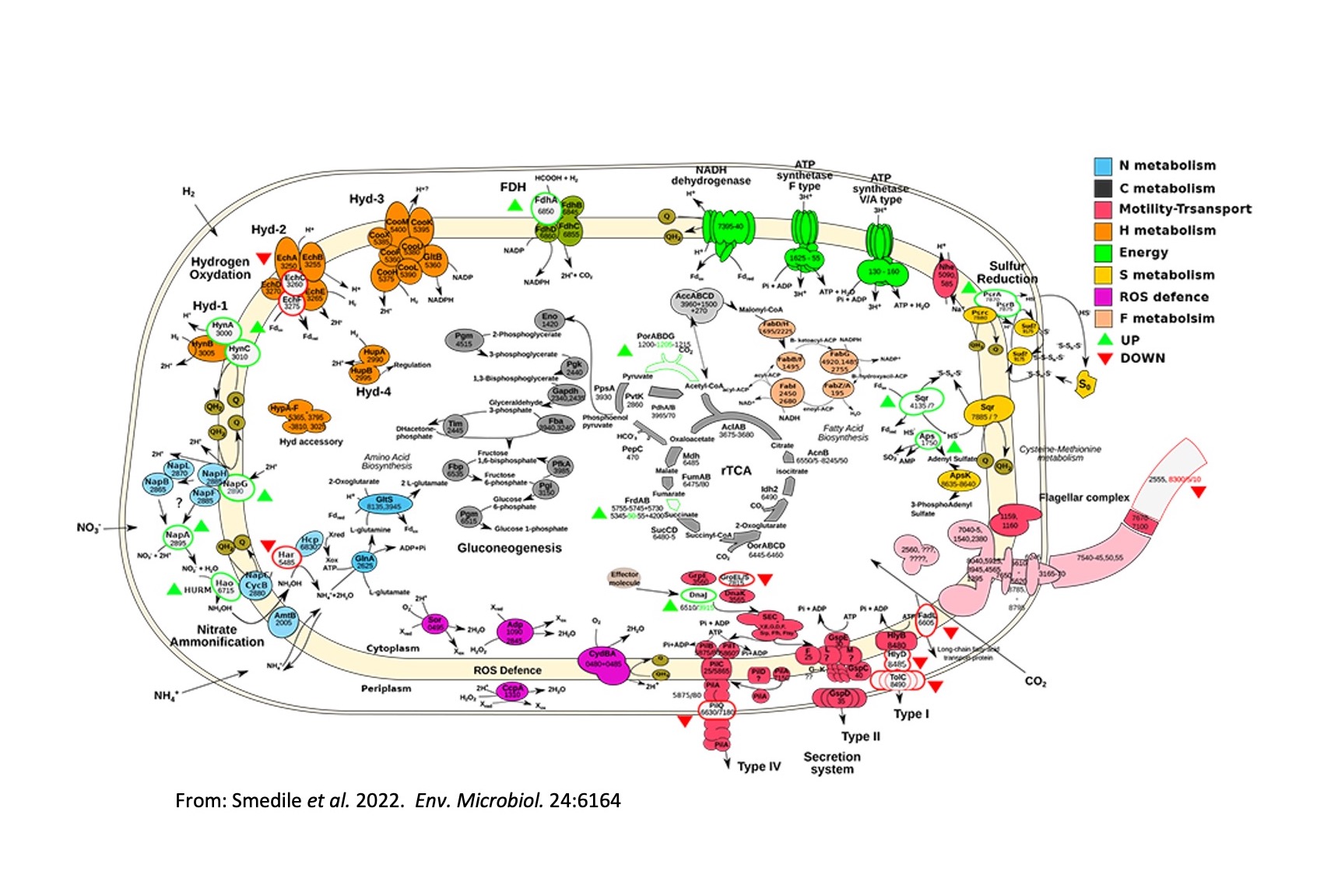Evolutionary history of microbial adaptation
Life co-evolved along with Earth’s changing environmental conditions and the reconstruction of the evolutionary history of key biochemical functions and microbial adaptation is critical to understand this process. The lineages that led to modern microorganisms that inhabit “relic” environments that resemble the early Earth (e.g. deep-sea vents) co-evolved with our planet for billions of years. Hence, the genomes of modern vent microorganisms carry both ancestral and recently acquired genes and provide excellent models to reconstruct how microbial metabolism evolved and adapted to Earth’s changing environmental conditions. At the DSML we carry out comparative genomic, transcriptomic and proteomic analyses of deep-branching microorganisms to reconstruct the evolutionary history of microbial adaptation. Our interests include the evolution of carbon fixation, anaerobic respiration and pathogenicity. For more information on these topics, read our papers in Environmental Microbiology, eLife, ISME J. and Genome Biology and Evolution and our general interest articles in Scientia and The Biochemist. We are also investigating the adaptation of deep-sea microorganisms to the high-pressure conditions that they experience in their native habitat. In collaboration with Dr. Dionysis Foustoukos at Carnegie Science, we operate a high-pressure, high-temperature chemostat (watch video) that allows us to grow thermophilic, chemosynthetic anaerobes at their natural pressure and temperature conditions. For more information on our research on high-pressure microorganisms, please read our paper in Environmental Microbiology on the adaptations to pressure of Nautilia sp. strain PV-1, a piezophilic Campylobacterium (aka Epsilonproteobacterium).




